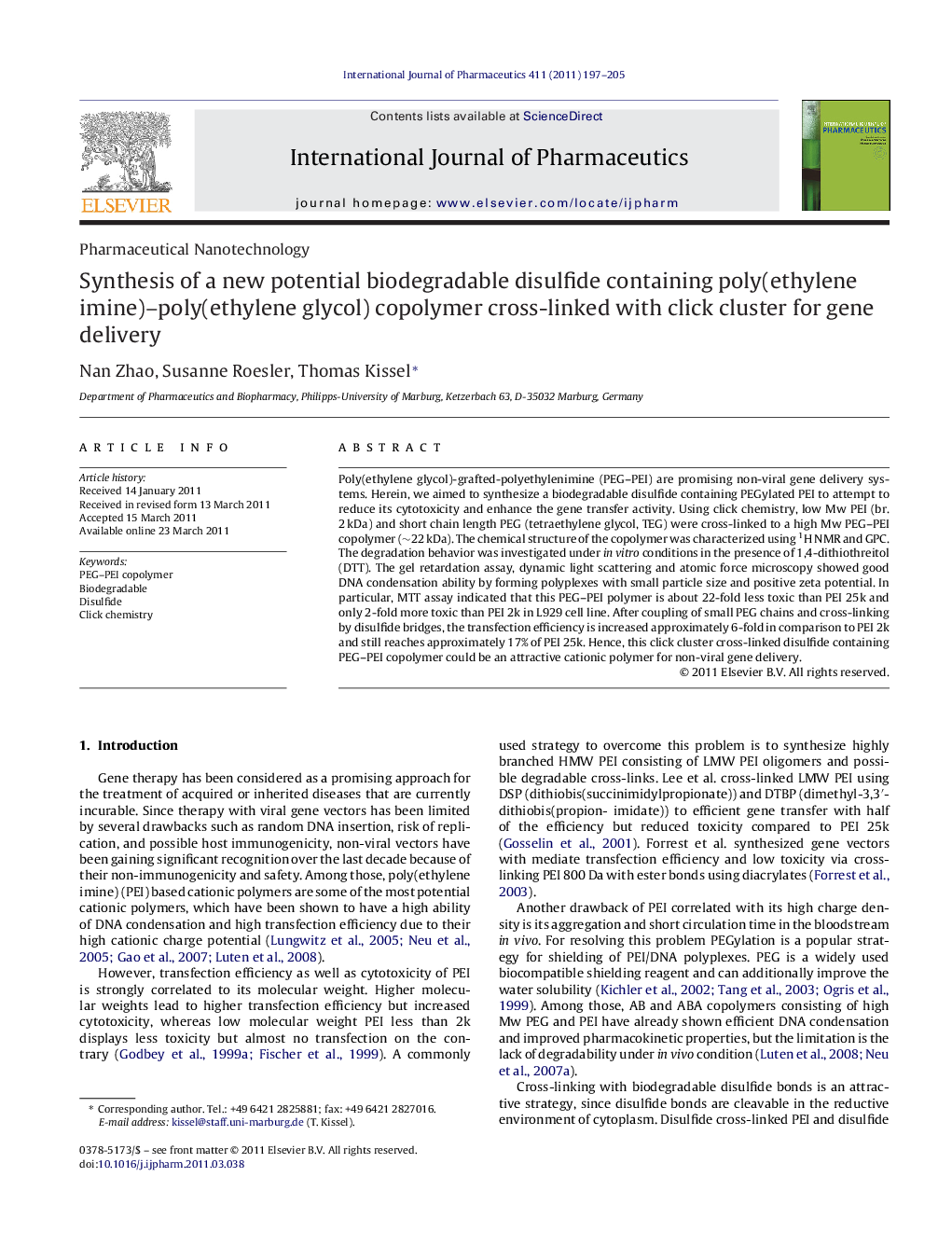| Article ID | Journal | Published Year | Pages | File Type |
|---|---|---|---|---|
| 2503578 | International Journal of Pharmaceutics | 2011 | 9 Pages |
Poly(ethylene glycol)-grafted-polyethylenimine (PEG–PEI) are promising non-viral gene delivery systems. Herein, we aimed to synthesize a biodegradable disulfide containing PEGylated PEI to attempt to reduce its cytotoxicity and enhance the gene transfer activity. Using click chemistry, low Mw PEI (br. 2 kDa) and short chain length PEG (tetraethylene glycol, TEG) were cross-linked to a high Mw PEG–PEI copolymer (∼22 kDa). The chemical structure of the copolymer was characterized using 1H NMR and GPC. The degradation behavior was investigated under in vitro conditions in the presence of 1,4-dithiothreitol (DTT). The gel retardation assay, dynamic light scattering and atomic force microscopy showed good DNA condensation ability by forming polyplexes with small particle size and positive zeta potential. In particular, MTT assay indicated that this PEG–PEI polymer is about 22-fold less toxic than PEI 25k and only 2-fold more toxic than PEI 2k in L929 cell line. After coupling of small PEG chains and cross-linking by disulfide bridges, the transfection efficiency is increased approximately 6-fold in comparison to PEI 2k and still reaches approximately 17% of PEI 25k. Hence, this click cluster cross-linked disulfide containing PEG–PEI copolymer could be an attractive cationic polymer for non-viral gene delivery.
Graphical abstractSynthesis and scheme of biodegradable PEG–PEI copolymers crosslinked with disulfide brigdes synthesized by click chemistry.Figure optionsDownload full-size imageDownload as PowerPoint slide
